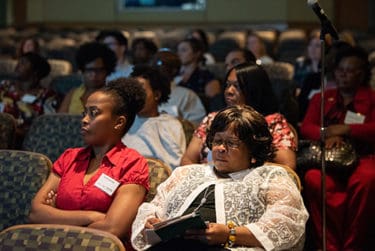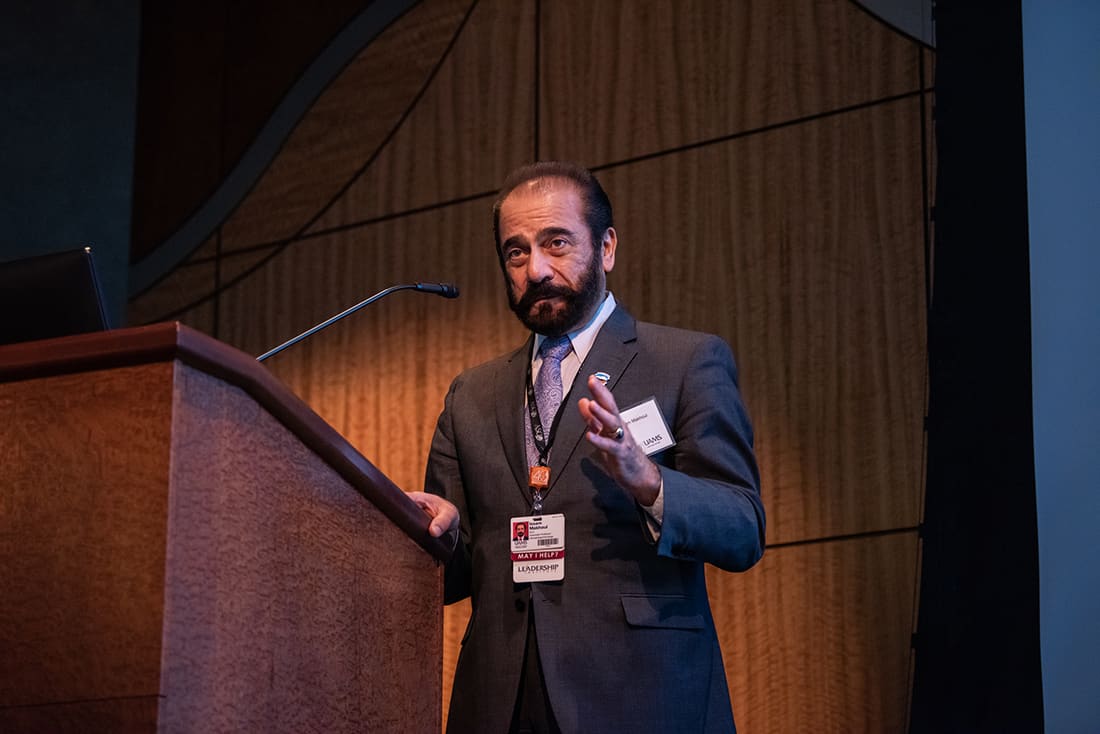Symposium Focuses on Past, Present, Future of Sickle Cell Disease Treatment
| One patient with sickle cell disease can experience severe pain and other symptoms while another with the same disease type only has moderate or even mild pain crises, said UAMS’ Issam Makhoul, M.D.
“What makes that disease so severe in one individual over another one?” he asked. “That’s what we need to learn more about. By participating in clinical trials, we will gain more knowledge about that.”

Sixty-one people attended the symposium, including adults with sickle cell disease, their families and clinicians.
Makhoul is medical director for the UAMS Adult Sickle Cell Clinical Program and director of the Division of Hematology/Oncology in the UAMS College of Medicine’s Department of Internal Medicine.
He was one of three presenters Sept. 17 at the Sickle Cell Symposium at UAMS. Sixty-one attended the gathering, sponsored by the UAMS Adult Sickle Cell Clinical Program.
Suzanne Saccente, M.D., is a pediatric hematologist and medical director of the Sickle Cell Program and Apheresis Program at Arkansas Children’s Hospital. She discussed the past of sickle cell disease research and treatment; Makhoul, the present; and Shelley Crary, M.D., the future. Crary is a pediatric hematologist at Arkansas Children’s and an associate professor in the UAMS College of Medicine’s Department of Pediatrics. Saccente also is an assistant professor in the same department.
Sickle cell disease is a group of inherited red blood cell disorders. Healthy red blood cells are round and travel through small blood vessels to carry oxygen throughout the body. With sickle cell disease, the red blood cells become hard and sticky, and result in a C-shape or “sickle.” When sickle cells travel to small blood vessels, they get trapped and block blood flow to the area. This results in pain and may lead to other problems such as infection, acute chest syndrome and stroke.
Both Makhoul and Crary discussed the challenges of using gene therapy and its future promise as well as other possible cures like bone marrow transplants.
Makhoul described the two approaches to gene therapy being developed. One uses a modified virus to insert a gene segment into a patient’s cells to correct the genetic disorder that causes sickle cell disease.
“What’s wrong with this scenario? It’s so hard to do,” Makhoul said. “Our body is designed to fight any kind of infection. The cell is going to try to destroy that virus. It also might try to silence that new gene segment because it’s coming from an outside source.”

Suzanne Saccente, M.D., talked at the symposium about the history of sickle cell disease treatment and research.
Another technology makes the same genetic correction to a patient’s cells in the lab so they can be injected into patients to replace the cells that cause sickle cell disease.
The cost per patient is estimated to be $500,000 to $700,000.
Bone marrow transplants are one of the procedures used to restore stem cells and cure sickle cell disease. Recent advances in ‘half-matched’ bone marrow transplantation have allowed for a much broader range of donors.
Transplantation comes with risks of chronic complications and even death, although the risk is less than 10 percent with a matched sibling donor, Crary said.
“But, for some people, it’s worth the risk to cure their child’s sickle cell,” Crary said. “We present it to families and they have to choose what is right for them.”
Apart from treatments and potential cures, the presenters discussed drug therapies like hydroxurea and L-glutamine for treating symptoms and pain crises, as well as pain medications like opioids.
“We shouldn’t just treat pain crises with pain medications,” Makhoul said. “Oxygenation, hydration and transfusion also are important. All those measures can lessen the pain because it’s a symptom of an acute inflammatory process, sometimes infectious and sometimes not. You need to target all those factors. Low-oxygen levels are the trigger.”
